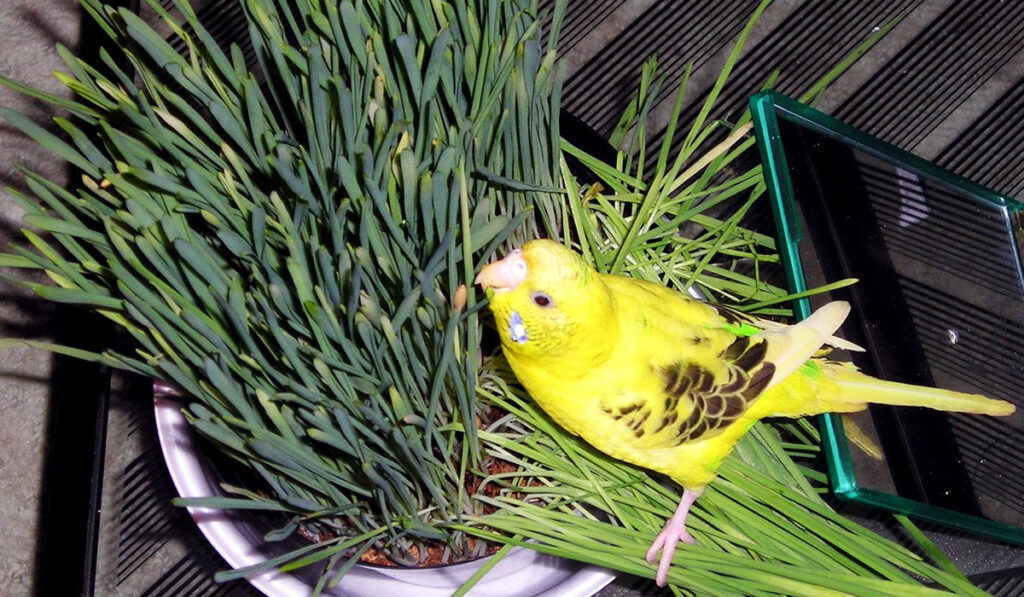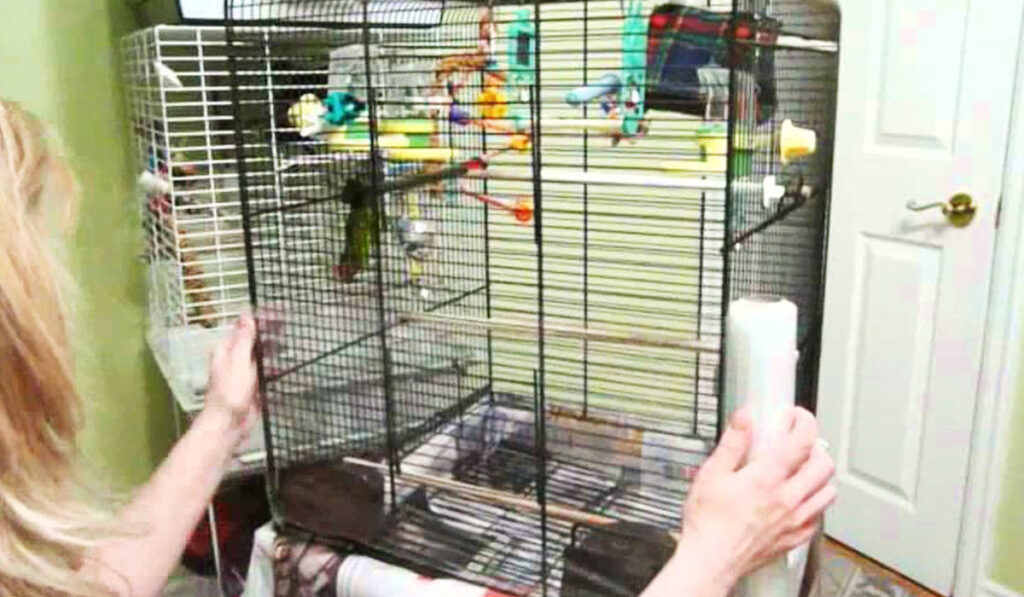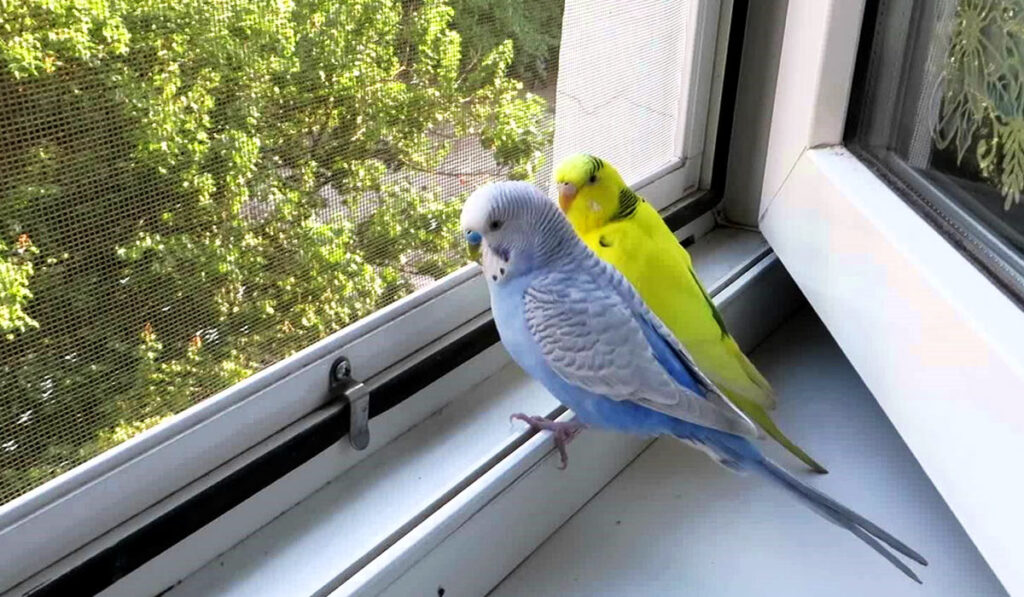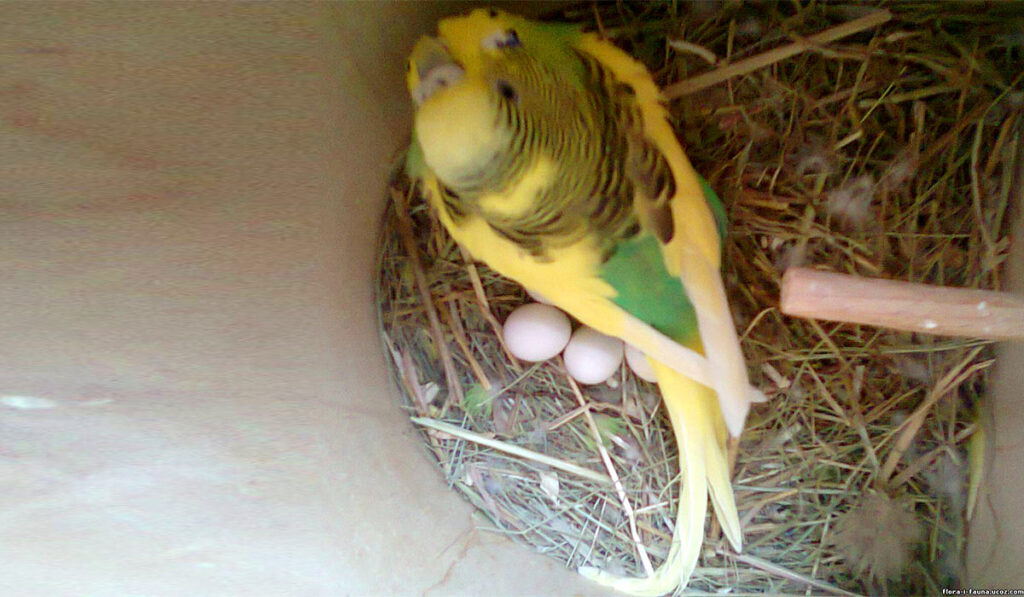First, make sure that neither you nor your pets are allergic to bird fluff; otherwise, your joy in buying a wavy parrot will quickly turn into a problem. Buying a pet in a pet store or from a trusted breeder is best. If you can invite a veterinarian for an initial examination, you should take advantage of it. When buying a pet, particular attention should be paid to the pet’s age. Proper care, feeding, and maintenance at home should begin with the early “childhood” of the wavy parrots. Young individuals adapt more quickly to new conditions, are easier to learn, and, in the future, will be able to give offspring.
You choose a wavy parrot: where to start caring for your bird.
The first time you examine the chick, you should pay attention to the fact that it is active. This can be determined by rapid, springy movements, quick reactions, and a desire to interact with the outside world. It should have shiny eyes, smooth, tightly fitting to the body, plumage, light, without hoarseness, breathing, and clean feathers in the area of the anus.

Inspecting the beak, smooth, dry, free of discharge and foreign formations, wax, and paws, which should not show signs of peeling, is also necessary. Claws should not be broken. Care for a wavy parrot will be more accessible if you have information about the parrot.

It is also essential to ensure that the bird is young enough. This can be determined by the wax (in young individuals, it is invariably delicate, pale pink, or bluish), the frontal feathers decorated with contrasting colored stripes (by 6-7 months of age, these stripes lighten), and the eyes (in chicks, they are uniformly dark; in adults, there is a gray and later a white rim on the outer edge).

If the bird’s sex is essential for the purchase because there is an opinion that males are more talkative, then the “boy” chick has a lilac wax (the adult—deep blue), the “girl”—blue, white, beige (the adult—brownish) around the nostril holes, and characteristic white rings around the nostril holes.
If we talk in general about parrot breeds, the most popular, affordable and accessible to keep is, of course, the wavy parrot, whose homeland is the grassy plains of Australia. Corellas and nerazluchniki are also quite popular.

Corella is also an Australian, the most miniature representative of the cockatoo family, and inseparable are residents of Africa and Madagascar. The small size allows you to keep these beauties in an ordinary apartment, in a reasonably compact cage, without any problems. If you choose a giant bird (e.g., a Jaco), it is essential to consider that it needs a sizeable spacious cage or aviary.
Feeding peculiarities of wavy parrots
A lapwing parrot needs not only careful care but also proper feeding.
The main components of the diet are as follows:
- greens;
- cereals;
- fruits and vegetables;
- proteins.

The basis of the diet is grain food. Nowadays, a wide range of feeds for different types of birds are on sale, so you can easily find the right one for your pet. It can be supplemented with porridge (buckwheat, rice, millet). It is necessary to give your pet fresh herbs:
- dandelion leaves;
- salad;
- dill;
- spinach;
- plantain;
- wild grains;
- dried nettles.

Fruits and vegetables are also beneficial:
- banana;
- orange;
- apple;
- pear;
- zucchini or pumpkin slices;
- grated carrots;
- beet;
- turnip;
- berries.

Chopped eggs and stale white bread are suitable as protein food. Remember that the pet should always have a drinker with fresh water, to which you can periodically add a few drops of lemon, orange, or grapefruit juice.
Keeping a wavy parrot: criteria for choosing a cage
When buying a cage, it is essential to realize it is a home for your parrot, so he should feel comfortable in it. The content of wavy parrots should begin with choosing future “apartments.” Spacious and tiered, able to install perches, rings, toys, several feeders, drinkers, and a bathing tank, this is an ideal selection, partially compensating for captivity.

It is also important that the cage is easy to use and made of durable material. A cage with metal bars will be the best option, as a wooden cage has a risk of parasites and is guaranteed to absorb and stagnate a specific odor.
Please don’t place the cage too close to the window, as drafts can make the bird sick.
It is desirable to build the parrot’s housing regime so that they can spend as much time outside the cage, flying, moving, and socializing. Insufficient flying will quickly affect the state of health, first of all, the respiratory function, which is directly related to the work of wings.

How often should the cage be cleaned? Caring for and maintaining wavy parrots at home involves several rules. First, cleanliness is necessary. As is known, cleanliness is the key to health, so cleaning should be done daily.

If for some reason (departure, employment, natural laziness) this is not possible, then in the tray of the cage to the sand can be poured wood filler, as for the cat litter box, so that it absorbs the odor and moisture, but do not abuse it.
It is necessary to clean the litter from the bars, scald the drinkers with boiling water, remove husks, and feed from the feeders. Sand and hygroscopic paper should be changed once a week. The cage should also be disinfected with 1-2% manganese solution.
Video: how to choose a cage for a wavy parakeet
Communicating with a Wavy Parrot – an important component of care and maintenance
In addition to the above nuances, it is important not to forget about communication. After all, buying a parrot, you want to get a friend or decoration of the home, so do not reduce the care and maintenance of wavy parrots to cleaning the cage. It is necessary to devote time to the feathered parrot itself.

The first rule is not to impose yourself on the bird, to give it a chance to get used to it, to realize that it has everything it needs for a comfortable existence (including peace).
After your pet has gotten used to you and the new environment, you should let him out of the cage. It makes sense to get clothes made of thick, easy-to-wash fabric for these occasions, if you want to train your feathered friend to ride on your shoulder like a pirate, but you do not want to be scratched by claws or “marked”.

The effectiveness of the process of learning to say words and phrases and taming will depend on many factors. For example, breed, age, and whether the parrot is kept alone or in pairs (in which case the birds are usually busy with each other). Jacquots, for example, are considered the most capable and receptive to memorizing human speech.
There is an opinion that the more often you repeat the same phrase or word, the faster the bird will memorize and reproduce it. This is not true, as sometimes a pet can memorize a phrase that it has heard once. Particularly talented can transmit even whole dialogues and quotes from movies word for word, as well as imitate various sounds: car alarms, dog barking, cell phone ringing, and even maintain a certain illusion of conversation with the owner, which is very amusing to both owners and guests.
Video: how to teach to talk wavy
Wavy parrots are more prone to reproduce human speech, it is much more difficult to teach a cockatiel or a nerazzo to speak. There is no point in turning the process into training, just talk to your winged vis-a-vis every day, as you would communicate with a family member, then the need to answer you will come to the bird by itself.
Diseases and precautions for wavy parrots
Keeping a parrot at home is also a responsible task because you need to monitor the health of your pet and understand how to take care of it. Eliminate the possibility of drafts to prevent the delicate tropical creature from getting cold, install additional protective nets on the windows and windows to prevent accidental flight outside the apartment.

Closely observe the behavior of the finch. Lethargy, drowsiness, photophobia, refusal to eat may indicate the onset of disease. Some of the diseases, being infectious, can be transmitted to humans. We are talking about such diseases as:
- Salmonellosis. Detection is difficult, often the bird is only a carrier, a reservoir of the disease.
- Tuberculosis. It is characterized by deterioration of plumage, ulcers and enlarged lymph nodes. It is practically untreatable in birds.
- Arizonosis. In arizonosis, anorexia, weakness, tremors develop, but timely measures taken give a positive outcome.Â
- Chlamydia. Signs of chlamydia in parrots: diarrhea, coughing, nasal discharge. The course is very rapid, often fatal.
Most of the diseases listed above are transmitted by bacteria in the droppings, so it is a good idea to clean the cage with a protective mask and medical gloves if you suspect an infection.
Video: how to rid a wavy parrot of mites
Breeding of wavy parrots at home
If your plans include increasing the population of flying pets, it will require the creation of a number of conditions for breeding. Breeding parrots in an apartment is not difficult, but it is troublesome.
The most difficult thing is to find a pair and understand how to properly care for a wavy parrot if it will live with a “family”. Breeders who have several individuals and, consequently, the space for choice, do this by observing parrots in a large aviary.

If parrots mutually care for plumage, treat, feed each other, “kiss”, they have every chance to have offspring. Then it is necessary, if necessary, artificially increase the daylight hours up to 14-16 hours, equip the cage (preferably with two doors) “nest” – a closed from prying eyes house, where the female could quietly arrange a clutch and sit chicks. Proper care and feeding of wavy parrots is especially important during this period!
Feeding during this period, along with the usual grain mixture and succulent supplements, should be sprouted grain, a soft, easily digestible feed. The quality of the clutch can be checked a week later by illuminating it with a flashlight or using an ovoscope. If the female is stable on the eggs and the male has taken care of her, it is hoped that the pair is complete.

When the partners quarrel, the mother often leaves the nest, leaving the clutch to its fate, or deliberately breaks the shell (which happens with young inexperienced birds), it makes sense to replace one of the parents. By following all the criteria of proper housing, it is quite realistic to get beautiful, colorful, healthy offspring from your couple.
Video: breeding of wavy parrots
Temperature and humidity: comfortable conditions for keeping a wavy parrot
Many parrots tolerate a small decrease in temperature for a short period of time. However, you should not allow your bird to stay in a cold room for long periods of time or expose it to noticeable changes in temperature.

The recommended temperature for optimal keeping of parrots is from 18 to 20 C. Under these conditions a favorable atmosphere for full life activity is created, but during breeding it should be lowered by 2-3 units.

Do not allow the temperature to be higher than normal, as this can lead to poor health, decreased appetite and impaired reproductive function. It is known that a high percentage of unfertilized eggs is observed in case of temperature violations. Lower temperatures have a positive effect on reproduction and fertilization. Air humidity levels should also be given sufficient attention.
For the room in which the bird is kept, the humidity should be between 70-80%. The temperature should be kept at 15-20C.
Controlling the humidity level is necessary when the temperature changes. High humidity can cause hypothermia in the parrot.





